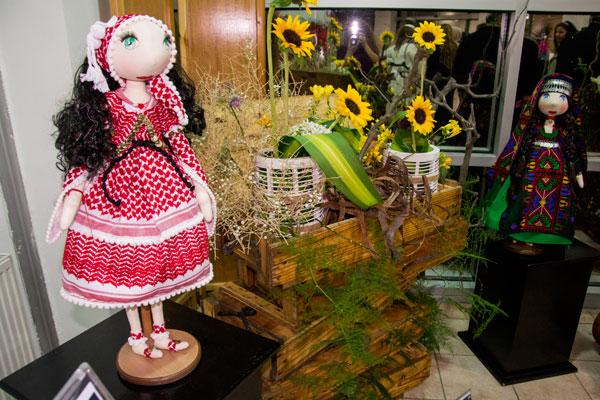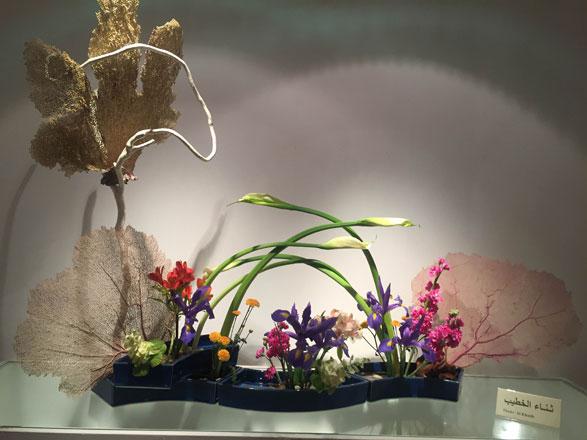You are here
Exhibition showcases Ikebana art, handmade dolls
By Suzanna Goussous - Mar 17,2016 - Last updated at Mar 17,2016

Flower arrangements on display alongside handmade dolls at the Greater Amman Municipality's activities building on Tuesday (Photo courtesy of Fakhri Alami)
AMMAN — On the occasion of the International Women’s Day and the Japanese Doll Festival, Jordanian women participated in an exhibition on Tuesday to present home-made decorations that reflect the theme of the current month in both Japan and Jordan.
At the sixth annual exhibition of the Seiko Sogetsu Study Group, held at the Greater Amman Municipality activities building, nine women showcased their home-made decorations, where they used “the Japanese flower arrangement technique with a Jordanian touch”.
Randa Kawar, the group’s president, said Ikebana art started spreading worldwide in the 1980s, and it has three schools in the Kingdom: the Ohara, Ikenoba and Sogetsu schools.
The Seiko Sogetsu study group started spreading the Ikebana art in 2005 in Jordan, and received accreditation from Japan in 2012.
“Such exhibitions should be spread to the local community… Every year we pick a different location to showcase the art pieces,” she told The Jordan Times.
The dolls showcased at the exhibition were handmade, with one matching every flower arrangement.
At the Doll Festival of Hinamatsuri, celebrated on March 3, dolls are set up on platforms to represent the emperor, empress, attendants and musicians in the traditional court dress of the Japanese Heian period.
Hunaida Deirani, a participant, said exhibitions are an important way to deliver a message and show talent.
Deirani has been making Japanese dolls for the past two years.
“I feel the attendees appreciate my art… it is not just about dressing the doll up with simple clothes, it’s about creating,” she added.
Deirani started creating dolls and sending them as gifts to her relatives and close friends, which is when she started sharing them on social media accounts and receiving “positive feedback”.
Jordan Kendo Committee Vice President Fakhri Alami said the exhibition is a “good way” to show the influence of Japanese culture on Jordan.
“This is a wonderful event that happens once a year to show the work of the hands and minds of Jordanian women… It is the merging of cultures,” he told The Jordan Times.
Alami added that in the past, Ikebana was practised by Samurai warriors.
“It’s an art that is supposed to show the ability to create art from what is around you… In the garden, the house; it is the utilisation of what is available and turning it into art, a flower, a broken pot.”
Related Articles
AMMAN — HRH Princess Wijdan, president of the Royal Society of Fine Arts, on Sunday attended the opening of a flower arrangement exhibition,
AMMAN — Showcasing the beauty of the desert and natural flowers, an exhibition of Ikebana opened on Wednesday to showcase different images o
FUHEIS — Aiming to revive culture and promote the arts, Fuheis residents are organising the Watar Souk showcasing artwork and hand-made prod


















